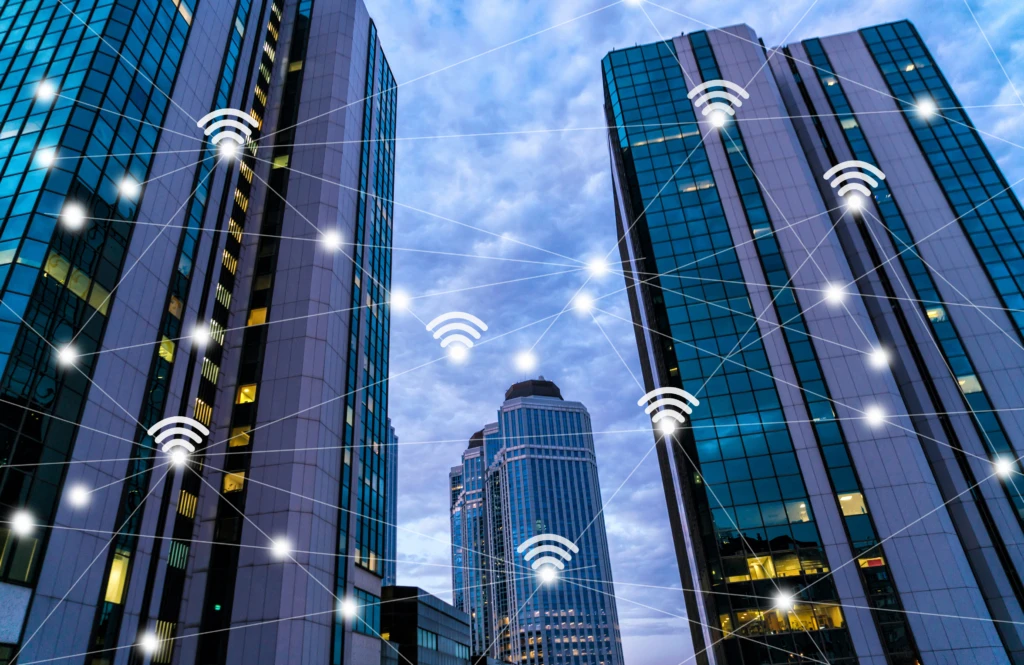
Digital experiences drive new revenue and differentiation for Telcos

Like 72 percent of organizations1, Telcos have long had customer experience (CX) top of mind and been investing to drive revenue growth.
In 2008, when I started my career as a Telecom consultant, my first project “Data is Key” set to identify the data key to power a new business intelligence (BI) engine. This engine, combined with a single customer identity across all business units, was a first step to facilitate a better, more lucrative experience for customers.
Next, a multi-year program was launched, building new data capabilities, streamlining billing streets and CRM systems. Today, they face the same core challenges, just every more complex and with a less forgiving, outspoken set of social-media active customers.
In 2019, their top management changed. This new team was curious, prepared to challenge the status quo, and ask hard questions. Why do we need a billing street? Netflix doesn’t need one. Many why’s later, eyes opened and the foundation for their 2021 strategy was set—focused on customer experience and continuous digital transformation.
While this story is similar for many Operators, we do encourage you to join the leading Telcos who made transforming the Customer Experience their core priority. We know how hard it is to constantly question whether the company is reaching its potential, to be never complacent.2 At Microsoft this is ingrained in our culture. Satya refers to this as ‘Growth Mindset’. It’s about every one of us having that attitude—that mindset—being able to overcome any constraint, stand up to any challenge, making it possible for us to grow, and thereby, for the company to grow.3
Fortunately, a set of unlikely forces recently came together, creating an imminent opportunity for Operators to do something profound. These forces are:
- Customers experience their Telcom providers as disjoined organizations, unable to meet their needs and issues in these challenging times.4
- Operators must make costly investments in 5G spectrum and infrastructure. Adoption is slow and consumers are unwilling to pay the fees that would economically warrant these investments.
- The conventional consumer behavior and expectations due to the pandemic and fueled by experiences with digital native businesses have changed at a primary level.
- The evolution in intelligent cloud and edge technology.
Together, they shape the perfect storm for you to rethink the intended experience and to transform your B2C capabilities into new B2B revenue streams. Do this well, and these changes shall create sustainable differentiation.
Microsoft’s strategy to transform the CX is designed to help Operators outpace the competition and outperform customers’ evolving expectations, comprising three levers:
- Next-Gen customer satisfaction with intentional and memorable experiences.
- Customer service as a sustainable differentiator across their journey.
- Data is key, but actionable insights in the moment are what you need.
The definitions that follow underpin our strategy.
Customer experience: the customer’s cognitive, emotional, behavioral, sensorial, and social responses to an Operator’s offerings during interactions across the entire purchase journey5, Telefonica and Vivo’s “Aura” serve as an example.
Customer satisfaction: a customer’s emotional response that reflects the degree in which the outcome met the customer’s expectations and needs for a specific service experience6, Telia is transforming to increase customer comfort.
Customer intimacy: a holistic set of tailored experiences that cater to the individual needs and expectations of a customer, aimed at driving a customer’s loyalty and advocacy.7 Vodafone’s TOBi, illustrates how technology can help build customer intimacy as part of a larger journey.
Customer journey management: a firm’s capability of effectively using actionable psychological, economical, and behavioral insights, combined with technology, to develop customer intimacy, the intended CX, and lead to maximum customer satisfaction.
Next-Gen customer satisfaction with intentional and memorable experiences
Imagine placing a video call to get some help in making a purchase decision or to solve an issue. There is no queue. You get to immediately speak with the brand’s face. A beautiful animation, with its trusted and original voice, “How can I help?”
Imagine, having a real conversation, persistent and carried as if you were speaking with a real person. And the best thing, you carry this experience in your pocket for help anywhere, anytime. This isn’t science fiction; this is real.
We understand though, that relying purely on technology inherits business risk. Hence, at Microsoft we believe in always creating a seamless augmented presence.
Augmentation blends the physical and virtual worlds as such they become a seamless reality. Presence is the psychological stage that focuses the customer. The medium used to get to this stage, is the intelligent technology. Presence can be triggered by reading a book, listening to a song, and by virtual interactions.8
When the limit of these tech-interactions is reached, a human agent backfills, a seamless transition in the same presence, assuring that the customer’s outcome is met while the technology learns from the agent’s interaction and body language.
Microsoft brings you the metaverse of cloud capabilities that facilitates such interactions. Ranging from Augmented Reality on smartphones to fully immersive Mixed Reality via the Hololens, backed by an always learning knowledge base, neural voice fonts, and high-quality AI powered animations that embody natural language and enact body language to evoke the intended emotional response.
Brands like Salvatore Ferragamo, AT&T with Bugs Bunny, and Progressive Insurance are just a few examples who realized that Microsoft is at the forefront of immersive technology and offers the best cross-platform mixed reality solutions.9
Early adopters will foster customer intimacy by creating next generation, highly memorable, customer experiences.
Customer service as a sustainable differentiator across their journey
Not every problem can be solved this way. The complex landscape wherein Operators find themselves, includes a wealth of possibilities that could be at the root of customers’ issues.
Solving the issue first time right is essential. Whether a service agent needs to visit the customer, a BTS site, etc. you must ensure that the visit is productive and solves the issue.
By creating an Always On service experience your team can succeed at once. All required knowledge, contacts, and real-time expertise is at their fingertips. Saving you cost and driving customer satisfaction.
Imagine having to deal with a complex repair, while the engineer on-site just recently started with your company. He uses Hololens and contacts the expert, working together, they are able to collaborate in real-time and explore different scenarios to implement the right fix.
Next, a moment of truth for customer intimacy. A customer, John, enters one of your stores. Highly frustrated and after a nearly twenty-minute wait, he reaches the desk of the assigned representative, Jane. A heated conversation follows, Jane is left flustered and unable to deal with John. She missed the opportunity to evoke a satisfactory emotional response and John left furiously.
This can easily be avoided. What if, you could better prepare your staff for these situations? What if, they could learn these skills at the convenience from your store or their home, with real-time feedback about the use of language, their body language, their knowledge, etc. Why not have them practice in a safe environment so that they can shine when their moment comes?
Both scenarios are feasible today. But what is perhaps more important, all discussed scenarios present a new revenue opportunity for your B2B business. You will already have created the right to play, showcasing your capabilities across your consumer business. Moreover, let’s monetize your big data by merging data-driven insights into a complete portfolio of B2B solutions and services—creating sustainable differentiation across your consumer and enterprise businesses.
Data is key, but actionable insights in the moment are what you need
The real-time nature of the discussed scenarios, require real-time actionable insights and intelligence. While the cloud provides everything you need, it is at a distance. A subset of these services must be at the intelligent edge for both your consumer experience and the enterprise B2B offerings.
Microsoft’s Azure Edge Zones with Operators—an infrastructure service that is an extension of Azure public cloud—brings the Edge into your 5G infrastructure combined with the power of the cloud, enabling the last mile. Combined these capabilities offer a complete package for your B2C and B2B business needs.
How to get started
- Setup an empowered cross-organization task force in charge of customer journey management, end-to-end.
- Operate holistically—based on the selected target customer segments —discover, analyze, and define the problem. Respect the premise that the problem is not any individual touchpoint but the journey as a whole.
- Prepare a lightweight business case that defines the intended CX outcomes from a financial perspective.
- Design the first solutions, expand the solution space—leverage Microsoft’s highly skilled experts to ideate and envision the art of the possible whilst being pragmatic and outcome focused.
- Jointly, both organizations to develop the first set of prototypes and decide on the best path forward.
- Develop and architect the solution in a repeatable and extensible format to benefit the immediate needs of the consumer business and to facilitate seamless adoption for enterprise B2B customers.
One final recommendation, across the six steps, ensure actual customers are involved, early and frequently to validate assumptions and to learn what works and what doesn’t.
In anticipation for the next article, please enjoy watching how Microsoft is enabling operators to deliver IoT solutions with 5G and learn more about Intelligent Telecommunications
References:
1 VanBoskirk, S. (July 2019). Prioritize Customer Value, Not Just Customer Experience. Forrester Blog.
2 Radicioni B. (October 2019). How Microsoft got its Groove Back. Babson Thought and Action.
3 Nadella. S. (2017). Hit Refresh, Employee Edition. HarperCollins Publishers.
4 Singapore Management University (June 2021). Info-Comm Sector’s Customer Satisfaction Declined by 4% in 2021. Newroom.
5 Adapted from Lemon, K.N. and Verhoef, P.C. (2016). Understanding Customer Experience Throughout the Customer Journey. Journal of Marketing.
6 Adapted from Bae S., Jung, T.H, Moorhouse, N., Suh, M., Kwon, O. The influence of mixed reality on satisfaction and brand loyalty in cultural heritage attractions: A brand equity perspective. Sustainability 2020, 12, 2956.
7Deloitte (November 2019). Experience selling: The future of B2B sales. Deloitte Digital.
8 Flavian, C., Ibanez-Sanchez, S., and Orus, C. (2018). The impact of virtual, augmented, and mixed reality technologies on the customer experience. Journal of Business Research.
9Hypothesis Group and Microsoft. (2020). Mixed Reality Intelligence. Manufacturing Edition.




